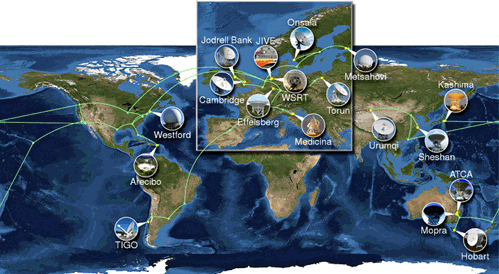|
|
|
|
|
|
|
News & Views item - January 2009 |
![]() Official Launch of the International Year of Astronomy. (January 14, 2009)
Official Launch of the International Year of Astronomy. (January 14, 2009)
Tomorrow and Friday, will mark the official launch of the International Year of Astronomy (IYA) with a ceremony at UNESCO (United Nations Educational, Scientific and Cultural Organisation) headquarters in Paris. About 600 participants are expected from 100 countries and Australia's representatives will include the Minister for Innovation, Industry, Science and Research, Kim Carr, Australia's Chief Scientist, astronomer Professor Penny Sackett, and Professor Ron Ekers, the immediate past President of the International Astronomical Union (IAU).
Perhaps the Chief Scientist will be able to further the cause of scientific research with the minister during their visit.
A feature of the opening will be the synchronization of 17 radio telescopes in Australia, Asia, Europe, North America and South America to observe three quasars which are among the most distant objects known in the universe using electronic, real-time Very Long Baseline Interferometry (e-VLBI). The data from each telescope will be sent through high-speed networks to a central processing unit at the Joint Institute for VLBI in Europe (JIVE) in the Netherlands.

Australia's contribution will come from radio telescopes located at Narrabri and Coonabarabran which will be remotely controlled from Sydney. The University of Tasmania’s 26 metre telescope near Hobart is the third Australian radio telescope taking part.
It is expected that the observations by the group will allow astronomers to generate images of the quasars with up to one hundred times better resolution than images from the best optical telescopes.
CSIRO's Dr Chris Phillips notes: "This demonstration is an unprecedented and extraordinary feat of coordination, involving 17 telescopes and 28 data networks around the world," while JIVE Director Huib Jan van Langevelde said: "With VLBI we can zoom in on the most energetic events in the universe, and the new e-VLBI technique allows us to do this fast enough to catch such events on the time-scale that they occur."
Beginning at 7pm this Friday AEDT, the telescopes will conduct a nearly continuous 33-hour observation of the three quasars, J0204+1514, 0234+285 and 3C395 --despite the Earth's rotation -- switching between the three quasars to accommodate different frequency observing capabilities of the participating telescopes.